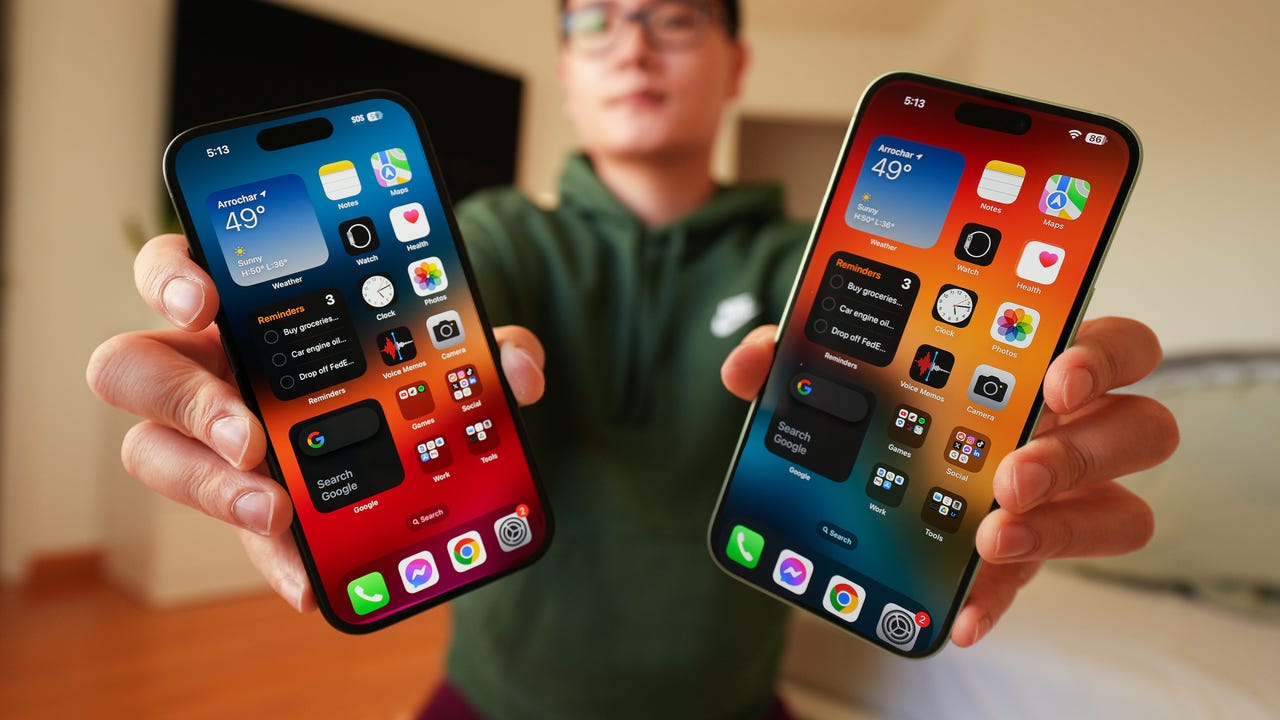
The iPhone 16 is still seasons away, but it’s never too early to start a wishlist of features, changes, and small details for Apple to (hopefully!) fulfill come September. After all, you may already be deciding whether or not you should upgrade to this year’s iPhone or hold onto your current device for a little longer.
Also: 6 reasons to buy an Apple Watch, according to a wearables expert
While the list of desired features below is primarily based on my experience testing smartphones over the years, they’re also backed by rumors, leaks, and other intel shared by analysts and industry experts. Nothing is official yet, but should the iPhone 16 check all, two, or even just one of the items on my wishlist, there’s no question I’ll be seriously considering the newest model later this year.
1. Reducing lens flare with new materials
When capturing images with the iPhone — Pro model or not — bright light sources like the sun, lamp posts, and car lights can produce lens flare and ghosting effects, an output that includes streaks of light and distorted figures. While the issue is most common in dimmer environments, the iPhone has similar experiences when used outdoors during the day, as ZDNET’s Jason Hiner remarked when testing the iPhone 15 Pro Max last year.
Also: iPhone 16 reports: Spatial video and ultra thin bezels coming to all models
As reported by MacRumors, sources close to Apple’s supply chain have hinted that the company is testing a new anti-reflective optical coating, made of atomic layer deposition, intended to reduce the camera artifacts previously mentioned. Should Apple introduce the feature with the iPhone 16, it would fix one of the longest-standing complaints about the iPhone camera system.
2. Higher refresh rate displays on non-Pro models
Apple did something very courageous last year: It brought the Pro line’s Dynamic Island to the less expensive non-Pro models, bridging a design gap that once separated the two. But there was still one display difference that was hard to catch for the untrained eye: refresh rate.
Compared to the Pro model’s 120Hz display, which portrays animations in a much flowy, smoother manner, the non-Pro iPhones’ 60Hz panels just didn’t look as polished, with a noticeable stutter when scrolling through bodies of text. Dialing up the refresh rate, even up to 90Hz, would make the baseline iPhone 16 models more satisfying to look at and interact with.
3. A voice assistant I can take Siri-ously
Have recent AI chatbots spoiled us? Personally, it didn’t take ChatGPT or Copilot to prove to me how incapable Siri was as a pocketable voice assistant, but the surge of smarter, more capable chatbots hasn’t helped Apple’s case either.
Also: How Apple’s AI advances could make or break the iPhone 16
When asking Siri for context on a topic — or, if you’re feeling ambitious, to do something — it’ll more often than not present you with web search results it thinks are most relevant. That’s the equivalent of asking a chef to cook a meal and they put a recipe book in front of you. No matter the case, the inconsistency with finding and presenting you with answers on its own makes Siri less reliable than a voice assistant on the world’s most popular smartphone should be.
Apple has already hinted at an AI-focused Worldwide Developer Conference this year, meaning we’ll likely see significant software improvements with the upcoming iOS version. And if the latest research findings are anything to go by, Siri will be smarter and more helpful than ever.




















